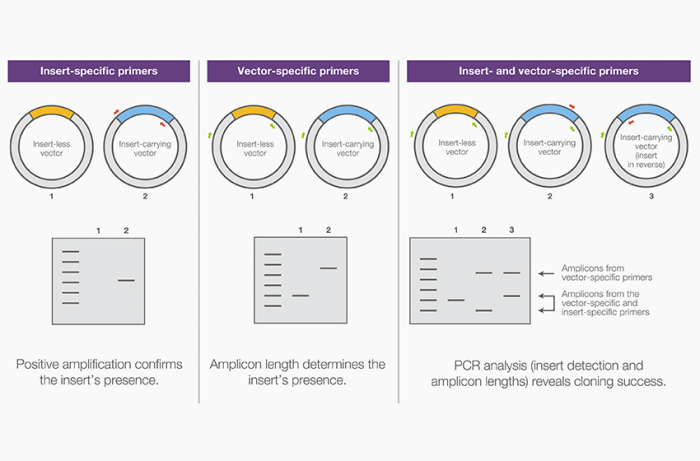Cloning the basics answer key – Unveiling the secrets of cloning, this guide delves into the fundamentals of this captivating scientific technique. From its ethical implications to its groundbreaking applications, we explore the world of cloning, unraveling its complexities and potential.
Definition of Cloning

Cloning refers to the process of creating an identical copy of an existing biological entity, be it a cell, an organism, or a fragment of DNA.
This technique involves using a variety of scientific methods to replicate the genetic material of the original entity, resulting in a genetically identical copy with the same DNA sequence.
Types of Cloning, Cloning the basics answer key
There are several different types of cloning, each with its own specific applications and implications:
- Gene Cloning:This involves isolating and replicating a specific gene or DNA fragment for research or therapeutic purposes.
- Reproductive Cloning:This refers to the creation of an entire organism that is genetically identical to an existing one, such as the cloning of Dolly the sheep.
- Therapeutic Cloning:This involves creating embryonic stem cells that are genetically matched to a specific patient, for use in regenerative medicine and disease treatment.
Ethical Considerations

Cloning raises significant ethical concerns, as it challenges our understanding of life, identity, and the potential consequences of altering the genetic makeup of humans and other organisms.
The potential benefits of cloning include advancing medical research, treating diseases, and preserving endangered species. However, there are also potential risks, such as the creation of genetically identical individuals, the potential for exploitation, and the disruption of natural ecosystems.
Balancing Benefits and Risks
Balancing the potential benefits and risks of cloning is a complex ethical challenge. It requires careful consideration of the potential impact on individuals, society, and the environment.
- Medical Research:Cloning could provide valuable insights into human diseases and the development of new treatments.
- Preserving Endangered Species:Cloning could help preserve endangered species and increase genetic diversity.
- Genetic Engineering:Cloning could be used to introduce genetic modifications, potentially reducing the risk of certain diseases or enhancing desirable traits.
However, there are also significant risks to consider:
- Genetic Uniformity:Cloning creates genetically identical individuals, which could increase the susceptibility to diseases and reduce genetic diversity.
- Exploitation:Cloning could be used to exploit individuals, particularly if they are created for specific purposes, such as organ donation or research.
- Environmental Impact:Cloning could disrupt natural ecosystems by introducing genetically modified organisms or altering the genetic makeup of existing species.
Ethical guidelines and regulations are necessary to ensure that cloning is used responsibly and for the benefit of society, while minimizing potential risks.
Cloning Techniques

Cloning involves creating genetically identical copies of an existing organism. Various techniques are used in cloning, each with its own advantages and disadvantages.
Somatic Cell Nuclear Transfer (SCNT)
SCNT is a technique used to clone animals. It involves transferring the nucleus from a somatic cell (a non-reproductive cell) into an enucleated egg cell (an egg without a nucleus). The egg is then fertilized, and the resulting embryo is implanted into a surrogate mother.
Embryo Splitting
Embryo splitting is a technique used to clone embryos. It involves separating the early-stage embryo into two or more individual embryos, each of which can develop into a separate individual.
Budding
Budding is a natural cloning process that occurs in some organisms, such as yeast and hydra. It involves the formation of a small outgrowth or bud on the parent organism, which eventually develops into a new individual.
Applications of Cloning

Cloning holds immense potential in diverse fields, offering numerous practical applications. From medicine and agriculture to research and conservation, cloning has opened up new avenues for advancements.
Medical Applications
In medicine, cloning has the potential to revolutionize treatments by creating patient-specific stem cells. These stem cells can be used to repair damaged tissues, treat diseases, and develop personalized therapies.
- Tissue Regeneration:Cloning can create replacement tissues for patients with organ failure or injuries, eliminating the need for organ transplantation.
- Disease Treatment:By cloning diseased cells, scientists can study disease mechanisms and develop targeted therapies.
- Personalized Medicine:Cloning allows for the creation of patient-specific stem cells, enabling the development of personalized treatments tailored to individual genetic profiles.
Agricultural Applications
Cloning has significant implications for agriculture, allowing for the production of improved livestock and crops.
- Improved Livestock:Cloning can be used to create genetically superior animals with desirable traits, such as increased milk production or disease resistance.
- Crop Improvement:Cloning can help create crops with enhanced yield, nutritional value, and resistance to pests and diseases.
- Conservation:Cloning can assist in the preservation of endangered species by creating clones of individuals with desirable genetic traits.
Research Applications
Cloning provides a valuable tool for scientific research, allowing scientists to study biological processes in unprecedented ways.
- Gene Function:By cloning specific genes, scientists can investigate their function and role in biological processes.
- Disease Modeling:Cloning can create animal models of human diseases, facilitating the study of disease mechanisms and potential treatments.
- Evolutionary Studies:Cloning can help scientists understand the evolution of species by creating clones of ancient organisms.
Examples of Successful Cloning Projects
Several notable cloning projects have achieved significant success.
Cloning the basics answer key provides a comprehensive understanding of the cloning process. If you’re looking for additional resources, abeka spelling and poetry 1 offers valuable insights into language and expression. Returning to the topic of cloning, the answer key delves into the ethical and scientific implications of this groundbreaking technology.
- Dolly the Sheep:The first cloned mammal, Dolly was created in 1996 and lived for six years.
- Snuppy the Dog:The first cloned dog, Snuppy, was created in 2005 and lived for ten years.
- CC the Cat:The first cloned pet, CC the cat, was created in 2001 and lived for 18 years.
Cloning and the Future

The advent of cloning technology has sparked considerable debate about its potential impact on society and the future. As cloning techniques continue to advance, it is crucial to consider the ethical implications and explore the challenges and opportunities that lie ahead.
One of the most significant potential impacts of cloning is its ability to address infertility and genetic disorders. By creating genetically identical copies of individuals, cloning could provide a way for infertile couples to have children who are biologically related to them.
Additionally, cloning could potentially be used to create stem cells that are genetically matched to patients, offering new possibilities for regenerative medicine and the treatment of genetic diseases.
Future Prospects
As research in cloning progresses, there are several promising prospects for the future. Advances in somatic cell nuclear transfer (SCNT) and other cloning techniques could make it possible to clone a wider range of organisms, including humans. This could lead to the development of new medical treatments, the preservation of endangered species, and the creation of genetically modified animals for agricultural and industrial purposes.
Challenges
However, cloning also presents several challenges that need to be addressed. One major concern is the ethical implications of creating genetically identical individuals. There are concerns about the potential for discrimination and the erosion of human individuality. Additionally, the long-term health effects of cloning are still not fully understood, and there is a risk of creating animals or humans with genetic abnormalities.
Conclusion
Cloning technology holds immense potential for the future, but it also raises important ethical and practical considerations. As research continues, it is essential to engage in thoughtful discussions about the responsible use of cloning and to develop appropriate regulations to ensure that this technology is used for the benefit of society and not to its detriment.
Expert Answers: Cloning The Basics Answer Key
What is the difference between therapeutic cloning and reproductive cloning?
Therapeutic cloning aims to create cells or tissues for medical purposes, while reproductive cloning seeks to produce a genetically identical individual.
What are the ethical concerns surrounding cloning?
Ethical concerns include the potential for genetic defects, the commodification of life, and the impact on human identity.
What are the potential benefits of cloning?
Cloning holds promise for treating diseases, preserving endangered species, and advancing our understanding of biology.
What are the current challenges in cloning?
Technical challenges include low success rates, immune rejection, and the need for further research.